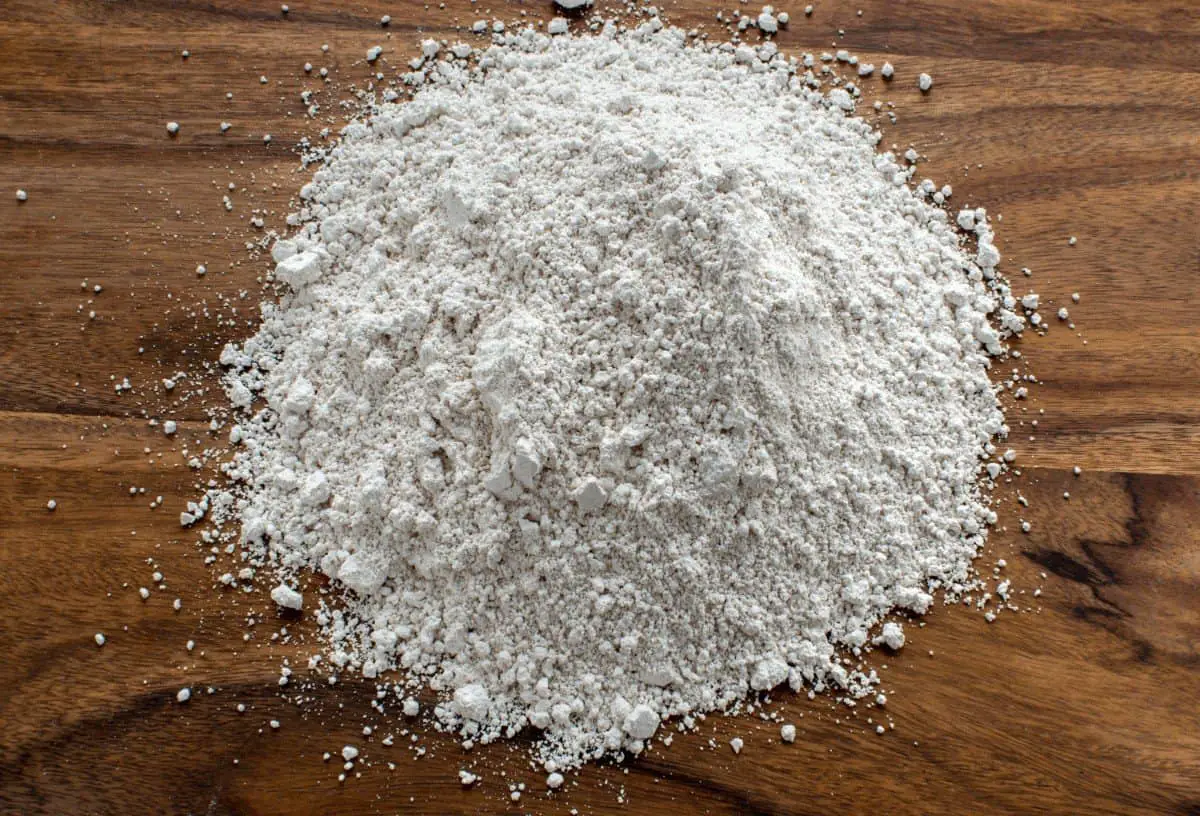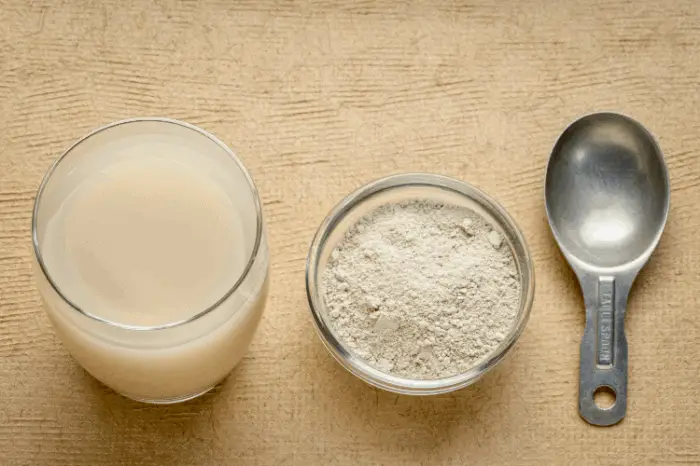Last Updated on January 9, 2023 by Griselda M.
We will talk about the best way to apply diatomaceous earth. Diatomaceous is a popular pesticide among environmentally conscious people who are uncomfortable with having toxic chemicals in their homes. This substance is composed of the fossilized remains of ancient organisms called diatoms and is primarily made of silica. Silica forms almost a quarter of the earth’s crust and can be mined in large quantities.
Two primary methods can be used to spread this substance: wet or dry. Neither one is really the ‘best,’ but they do have situations in which they work better than the other.
Diatomaceous Earth Uses
The main draw of diatomaceous earth for pest control is that it is not toxic or poisonous to humans or pets. Instead, it works as a desiccant that dries out insects and other pests. It kills them through dehydration and essential mummification.
The diatomaceous earth targets the exoskeleton in particular, without which bugs cannot survive. Because it is non-toxic, diatomaceous can be scattered throughout a home while posing no threat to residents.
Reasons to Use Diatomaceous Earth
Many people favor this product because it is significantly less toxic than other pesticides on the market. Tons of products are used to eliminate termites, cockroaches, ants, spiders, and other pests. These products contain substances that are toxic to almost all living things.
Diatomaceous earth is seen as a natural solution to pest control problems. This is because it comes from nature, doesn’t leave behind harmful toxic residue, and causes few issues for people. It also has limited effects on users who might worry about their health or that of children and pets.
The Effects of Exposure to Diatomaceous Earth
Touching or eating diatomaceous earth has been shown to have little to no practical effects on humans and animals. This is because the body and its organs naturally contain trace amounts of silica, and very little of the substance is absorbed during digestion.
When inhaled, diatomaceous earth can be more of an irritant. It dries out mucous membranes like those inside the nose, leading to redness, itchiness, and occasional pain. It can also get into the lungs, causing further irritation and coughing. To avoid this problem, you can wear a filtered mask for the nose and mouth while applying.
Diatomaceous Earth and the Environment
Once it’s out in the world, diatomaceous earth has little to no effect on the environment or larger wildlife. Unlike many other pesticides, diatomaceous earth is once again naturally occurring in lakes and streams and won’t harm fish or large animals like dogs, cats, birds, and mammals or reptiles.
Its effects are primarily on insects with tough exoskeletons that can be dried out and eliminated. It should not damage flowers or herbs and won’t kill any cute animals that make their way to your garden. It will only hurt insects and unwanted bugs.
How To Use Diatomaceous Earth
The Wet Method
Sometimes you want to put a pesticide in a location where a dry powder will not work well. This is common in the nooks and crannies of homes and unusual places that need protection, like the underside of leaves that are exposed to pests like aphids.
The easiest way to apply diatomaceous earth wet is to mix the powder with water. The best ratio is mixing four tablespoons of diatomaceous earth with an entire gallon of water until the powder completely disintegrates. The water will then have a somewhat sticky texture but will continue to be a liquid.
There are two ways the wet diatomaceous earth can now be placed. The first is by putting the mixture into a spray bottle and liberally spraying the substance in hard-to-reach areas like the nooks and crannies of ceilings and similar locations. The second is by using a disposable applicator like a popsicle stick to spread the liquid in locations like underneath leaves and similar spots.
Wet application is used often in gardens and for homes that are suffering from pests that can be difficult to manage. It does not reduce the effectiveness of diatomaceous earth.
The Dry Method
It’s easy to use the dry method as well. In this case, diatomaceous earth is left as a powder and is sifted in areas where pests are common and control is needed. In sifting, the powder is poured into a strainer and then carefully spread across carpets, stairs, in gardens, and around entire rooms.
The substance will not hurt humans or pets, although it can sometimes dry out the skin due to its properties.
The dry method can also be used to target nooks and crannies in homes. All you have to do is get a utensil like a turkey baster and fill it with diatomaceous earth. You then squeeze the powder along the baseboards of walls, into corners, and even underneath furniture.
The only downside to the dry method is that the loose dust can move around with the breeze or gusts of wind, meaning it can blow back in your face and potentially cause irritation to the eyes, nose, mouth, and lungs. To avoid this problem, experts recommend wearing a mask while applying and using the dry method in enclosed spaces with controlled air.
When Should I Apply Diatomaceous Earth to My Lawn?
This will depend entirely on where you live. I have used it to control mites on my lawn with limited effect during the summer. Generally, for much of North America, you would achieve the most effective control of lawn pests by applying it from early July. This is the peak bug growth period.
Are Sevin Dust and Diatomaceous Earth The Same Thing?
From what I can see on the product registration, Sevin dust contains organophosphate pesticides. It may use diatomaceous earth as a carrier – I cannot see that list, but it is not the same as diatomaceous earth. Diatomaceous earth in its natural form contains no man-made pesticides or toxins. It is just old fossilized algae. So, they are not the same thing.
How Often Do You Replace Diatomaceous Earth?
Diatomaceous earth does not go away – it just gets mixed into your soil. When this happens it will become an inert soil component. Hence replacement will be determined by the loss of efficacy in controlling whatever you wish to control. If you find that the pest you are controlling is not controlled, it may be time to reapply it.
I have found the only place diatomaceous earth works is in keeping weevils out of my seed collections. I take beans, maize, and other weevil-prone seeds and dust them with diatomaceous earth. I then freeze the seeds and keep the bags closed. Normally weevils will not emerge from this process.
Does Diatomaceous Earth Get Rid of Squash Bugs?
Squash bugs (Anasa tristis) are a type of stink bug. They crawl around squash plant leaves and young fruit making holes when they eat. They are a nuisance, and if left uncontrolled multiply out of control and can wreck your crop.
You can achieve a small amount of control of these bugs with diatomaceous earth – put a bit at the base of your plants when they are young, and this should stop them a bit. I would recommend neem sprays however as these are far more likely to be effective. This is the sort of pest that you do want to control.
Squash bugs are more attracted to Zucchini squash plants, especially golden varieties than pumpkins and others, so you can also plant zucchinis, and then run these up a trellis and place diatomaceous earth at the base of the plant. Inspect the plant for bugs and remove and squash these. I find my ducks eat them and keep the population under control.
Is Baking Soda The Same as Diatomaceous Earth?
No. Baking soda is sodium bicarbonate – this is a salt of sodium with two bicarbonate ions. It is a simple, small molecule. Diatomaceous earth on the other hand consists of a fossilized diatom skeleton. Think White Cliffs of Dover – that is a big wall of diatom skeletons. These skeletons are billions of times bigger than sodium bicarbonate molecules. They are composed of silica and various other organic compounds.
What Bugs Are Killed By Diatomaceous Earth?
Diatomaceous earth is pretty indiscriminate with what it will kill. It functions by cutting up the insect’s exoskeleton – this causes the insect to dry out, get infected by diseases, and so on. So pretty much any insect that gets the diatomaceous earth onto its exoskeleton will be affected. I have noticed it works better on smaller insects – mature locusts and crickets do not seem to be much affected.
How Do You Get Diatomaceous Earth Off Plants?
The easiest way is just to hose the plants down. This will wash the diatomaceous earth from the leaves. Use a sprayer to break the hose stream up a bit and it is really easy to clean the leaves.
Conclusion
Diatomaceous earth is a wonderful, multi-purpose pesticide that can be applied with fewer hazards than topical substances and spray pesticides. It can be used indoors and outdoors, works great against hard-to-kill pests like cockroaches, and can be found in almost any hardware or garden store.
When it comes to application, there are two ways it can be done: wet and dry. While they are both great, wet is perhaps the best for people who are wary about having the potentially irritating powder loose in their homes. Just remember to get the ratio right and apply it liberally to create a barrier against pests.
Tony Manhart is a passionate gardener who has been tending to gardens for over 20 years. He takes pride in creating beautiful outdoor spaces with plants, trees, and shrubs that can thrive in any environment. He loves to share his knowledge with others and has taught classes on gardening basics and advanced techniques. He is committed to sustainability, using natural and organic methods to create and maintain gardens. He also works with local organizations to create green spaces for communities. When he’s not gardening, Tony enjoys hiking, reading, and spending time with his family.





